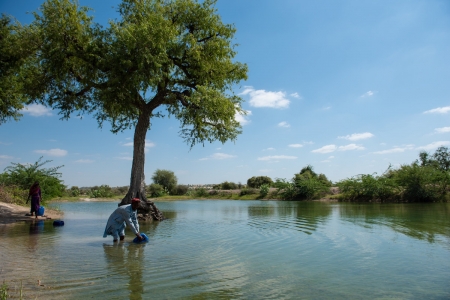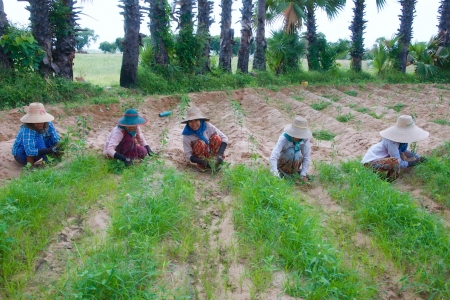This blog is part of the Agriculture and Ecosystems Blog’s month-long series on Restoring Landscapes.
“Influencing policy and investment are the hottest topics in research,” says Debora Bossio from the International Center for Tropical Research (CIAT). This is especially true during this weekend’s Global Landscapes Forum (GLF), in the middle of the two-week COP19 conference where policy makers are here in Warsaw to negotiate a climate change deal.
 Photo: Neil Palmer
Photo: Neil PalmerBut it is becoming increasingly evident that agriculture will yet again be left out of a climate deal during this round of negotiations, so participants at the GLF are discussing ways to make sustainable or “climate-smart” agricultural development more attractive to investors and policy makers. Throughout the course of the weekend, it has become clear that scientific researchers and policy makers might not be speaking the same language.
The scientific language
Agriculture is part of the climate change problem, as it contributes 14 to 24% of global greenhouse gas emissions, but more importantly it is also part of the solution. Climate-smart agriculture is both an adaptation and mitigation strategy that can both improve farming practices, yields, and resilience to climate change while reducing emissions.
This is proven and supported by research. But the big question, from the beginning of these climate change negotiations, is if research can catalyze policy change and investments. Research has shown since the 1970s that greenhouse gas emissions are causing and will continue to cause climate change but we’re still fighting to get policies in place that will not only protect the planet but that will protect the 2 billion smallholder farmers who are most vulnerable to climate change and uphold our food production systems.
Case Study: Nepal
In Nepal, research from the International Water Management Institute (IWMI) has provided the scientific evidence for a USD$25 million watershed development program that aims to combat water scarcity issues in the country, says Luna Bharati, head of IWMI’s Nepal office.
With a program of that size, it’s surprising to find out that Nepal is actually one of the most water abundant countries in the world. But all the water tends to come at once! For most of the year, Nepal has very little rain. When water rushes in during the monsoon months from June to September it brings in 85% of annual rainfall.
Climate change has often been the scapegoat for water scarcity issues and out-migration of farmers due to difficult farming conditions. But IWMI’s research has shown that climate change isn’t the only factor.
The landscape - the area that encompasses the entire watershed basin including forests, streams, agricultural areas and communities - can actually retain water throughout the year with proper water management strategies. These solutions can not only help make water more available all year round, but they can also help reduce impacts from downstream flooding.
IWMI is providing some of these key research findings to Nepal’s Department of Soil Conservation and Watershed Management and the Asian Development Bank’s Pilot Program for Building Climate Resilience.
The program will improve water storage in the upland hill and mountain watersheds - where poverty is worse. This will provide a number of benefits:
- mitigation of floods in monsoon seasons
- improvements in the availability of water
- increases in the resilience of farmers to climate variability
Read the book:
Tackling Change
But how do we make these types of solutions attractive to investors?
The investment language
First we need to learn how to speak the same language. As Peter Bakker from the World Business Council for Sustainable Development explained this morning at the GLF: to investors and the private sector, landscapes really mean supply chains. And it’s pretty easy to understand why the private sector would be interested in the sustainability of their supply chains:
- Sustainability means long term gains
- Improving resilience of landscapes means risk management
- Agricultural development means money
There is a potential USD$1.4 trillion to be made in improved agricultural yields, if land is managed sustainably. And trillion isn’t a typo.
By reducing climate risk, financial risk is also reduced, which in turn reduces the risk of investment.
In Nepal, Dr. Bharati says that through improved access to water and increased resilience to climate variability, the Program for Building Climate Resilience in Nepal could have a major impact on private investment in the agricultural sector. But in order to attract private investors, we will need to learn to communicate the benefits from this project effectively.
“The government could see enormous benefits from their investment in this project – as it’s much more cost effective to invest in reducing vulnerability than paying to clean up after disaster strikes,” she said.
Research can influence policy makers and it can clearly entice investors. We just need to start speaking the same language.








Comments
Applying the principles of climate smart agriculture across landscapes - that means crops, livestock, forests and fisheries - has the potential to sustainably increase food security, enhance resilience and reduce agriculture's carbon footprint. Pursuing this approach is not a luxury, it's an imperative!